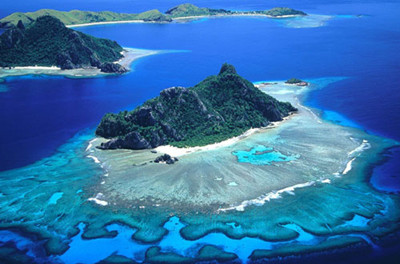And extremely cold.
极端的寒冷。
At four degrees, it's the same temperature as the sea in the Antarctic.
只有四摄氏度和南极洲海水同样的温度。
The ROV reaches a depth of 800 metres,not quite at the bottom, but not far off.
水下机器人到达了800米深处,虽然还不算到达底部,但也差不远了
A pile of coral sand at the base of the reef wall slopes gently into the abyss,and here we find signs of real deep-sea creatures.
在珊瑚礁墙的底部有一堆沙子缓缓的倾斜到深渊里,这里我们发现了一个深海生物的信号。
Some, like this sea anemone, are familiar.
有点像我们熟悉的海葵。
Others are less well known, like this chambered nautilus.
其他的知名度比较差,比如这个鹦鹉螺。
It's an ancient relative of octopus and squid,a living fossil, the last survivor of a group of animals that dominated the world's oceans 500,000,000 years ago.
它是章鱼和乌贼的远古近亲,它是一个活化石,是500,000,000年前统治海洋那些动物的最后的幸存者。
It moves around by jet propulsion,squirting water backwards, in order to go forwards.
它通过喷射前进,向后喷水来获得前进的力量。
At night, it's the nautilus's turn to migrate.
晚上是鹦鹉螺定期活动的时候。
It swims up towards the surface to feed on shrimps beside the reef wall,returning back down during the day.
它向海面游去捕食珊瑚礁墙附近的虾然后在白天返回。
This is a baby nautilus,the first time one's been filmed in the wild.
这是一只小鹦鹉螺,它是第一次在野外被拍摄到。
It's no bigger than a two-pound coin,yet it makes the same daily up and down journey as its plate-sized parents.
它还没有一个两英镑的硬币大,但是它每天也要上去然后下来和它那盘子大小的父母一样。
译文属可可原创,仅供学习交流使用,未经许可请勿转载













